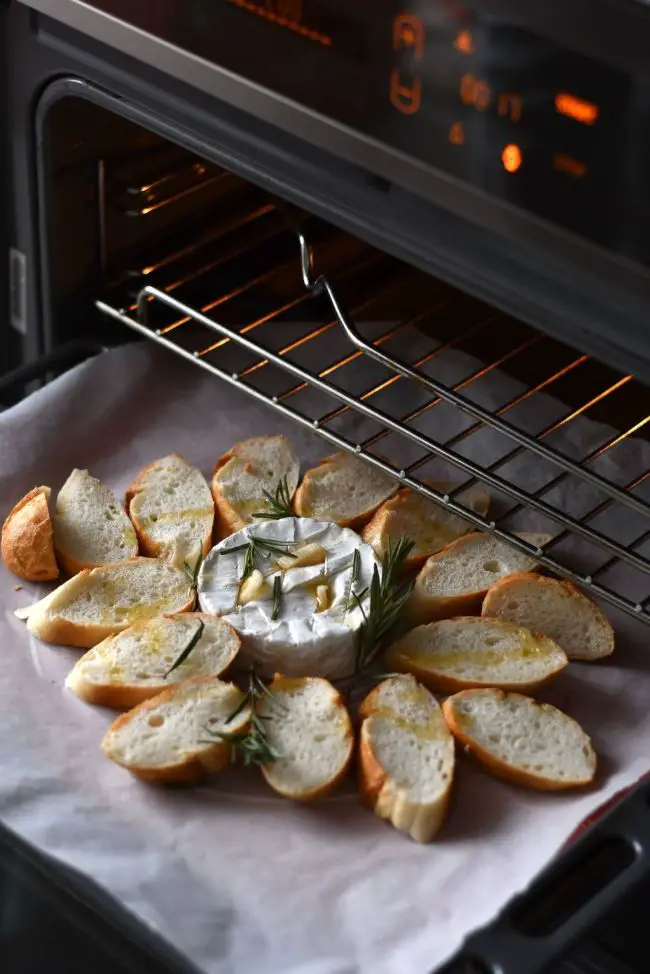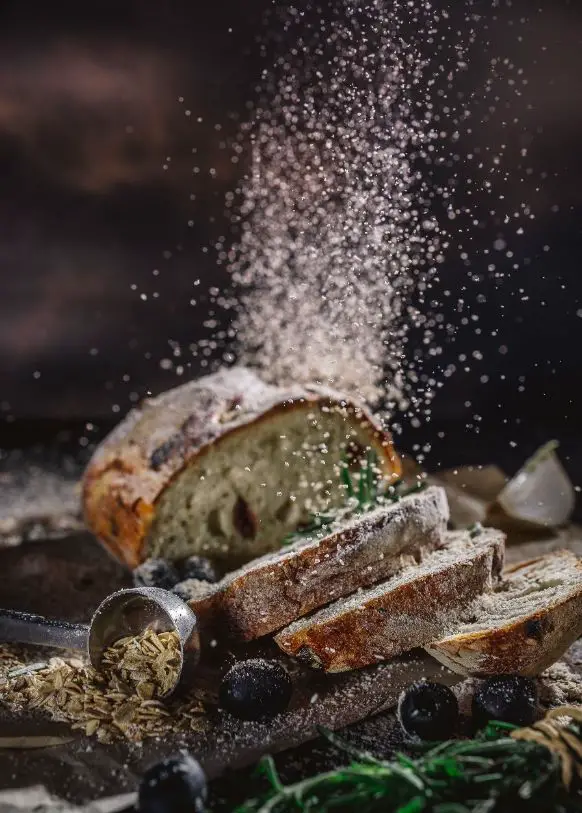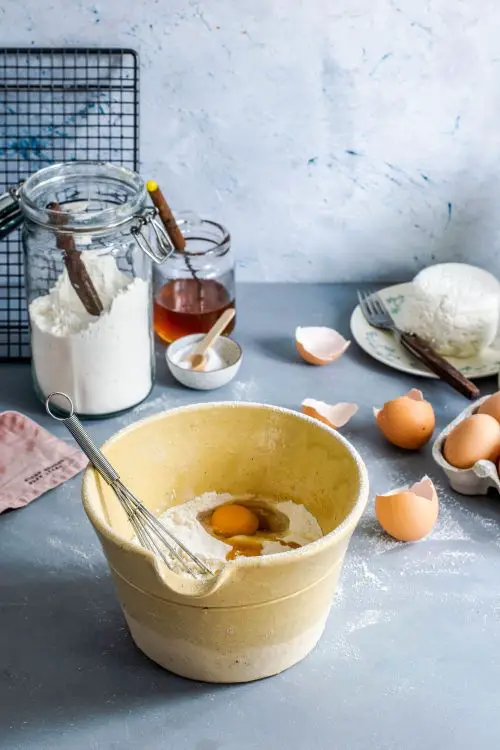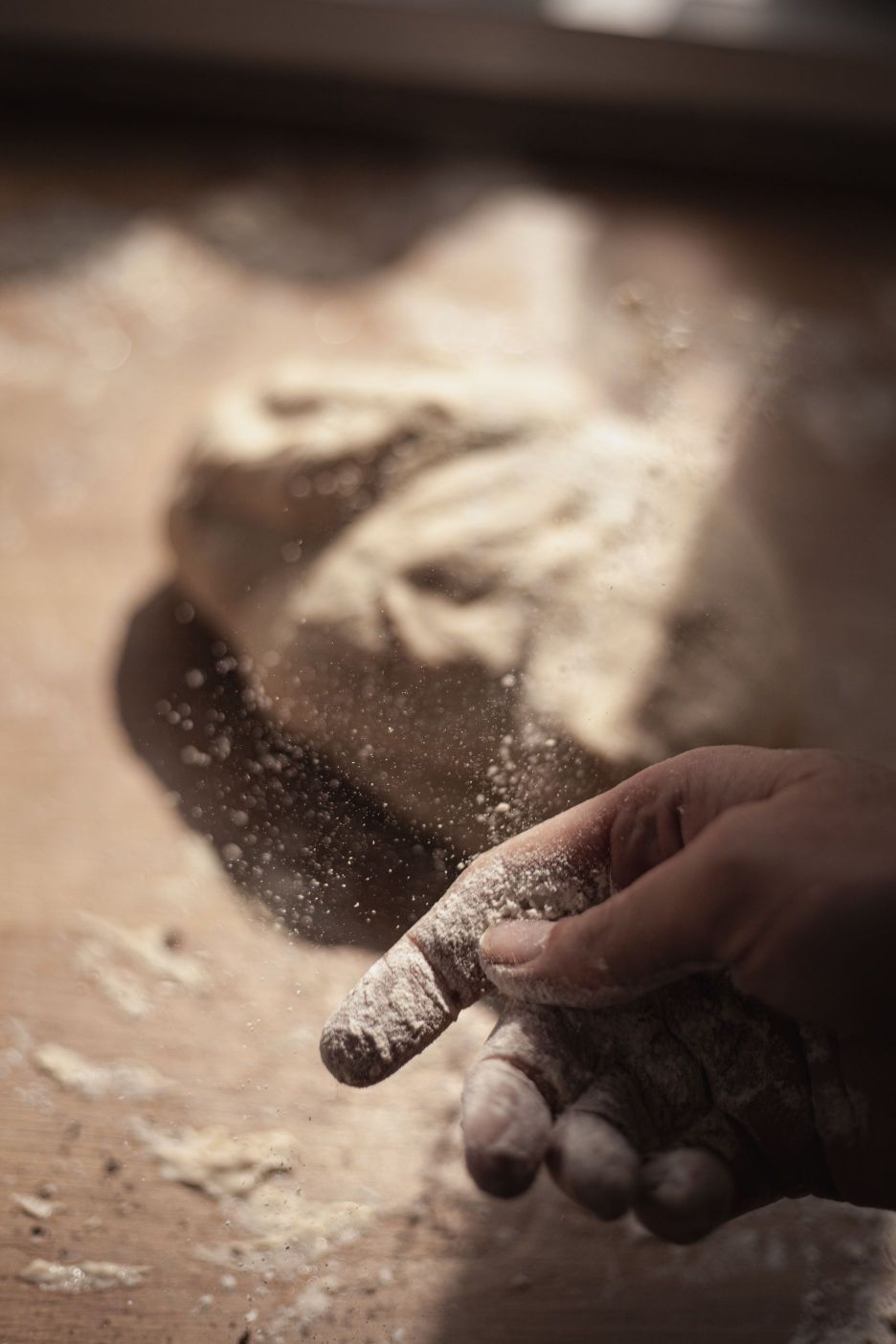Have you ever asked yourself why is my bread not browning as expected? If the answer is yes, then this article is for you.
Baking bread can be a rewarding experience, especially when you take out a perfectly browned loaf from the oven.
However, it’s not always easy to achieve that golden-brown crust, and many home bakers struggle with bread that just won’t brown the way they want it to.
But don’t worry, because there are several reasons why it might be happening, and I am here to help!
In this article, I’ll reveal the 5 possible causes of bread not browning and provide tips and tricks to ensure you get that perfect crustiness and amazing color every time.
Why Is My Bread Not Browning – Revealed
If you’re an avid baker, you may have encountered the issue of bread not browning as desired.
There are several reasons why this could be happening. Here are 5 main causes of bread not browning
1. Lack of Moisture
One of the most common reasons why bread may not turn out with a beautiful golden brown color is due to lack of moisture. Just like our skin, bread needs moisture to achieve a nice crust.
If the dough is too dry, it won’t brown as desired. When the bread is baking, the heat transforms the moisture on the surface of the bread into steam.
This steam then helps to create a golden-brown crust.
To make sure your bread has enough moisture, it’s essential to ensure that there’s enough water in the dough during the mixing process.
This hydration process helps to create a moist surface on the dough that will turn into a beautiful golden crust in the oven.
Accurately measuring the water is crucial to ensure that the dough has enough moisture. It’s also important to avoid overhandling the dough since this can lead to drying it out.
2. Not Enough Heat
Another possible reason for bread, not browning is an insufficient baking temperature.
The heat from the oven is crucial for the Maillard reaction to occur, which is what causes bread to turn a beautiful golden color.
If the oven temperature is too low, the reaction won’t happen as it should, and the bread won’t brown.
To get the perfect color and texture, it’s important to follow the recipe and set the oven to the correct temperature.
Different types of bread may require different temperatures, so it’s always a good idea to double-check the recipe.
3. You’re Not Giving Enough Time
The baking time is one of the most critical factors to consider as it can determine the final outcome of the bread.
Under-baked bread is usually caused by insufficient baking time, which results in a gummy texture and raw doughy interior.
it’s essential to monitor the bread closely to avoid this outcome.
There are various methods to determine if bread is fully baked.
One of the most common methods is the tap test, where you tap the bottom of the bread with your fingers, and if it sounds hollow, it’s an indication that the bread is fully baked.
Another reliable method is to use a thermometer to check the internal temperature of the bread.
The ideal temperature range for most types of bread is around 190-200°F. However, some bread may require a slightly different internal temperature, depending on the recipe.
4. Incorrect Oven Rack Position
The placement of bread in the oven is crucial in achieving a well-browned loaf.
When the bread is too close to the walls of the oven, it may not brown evenly and quickly.
This can happen because the walls of the oven can absorb the heat, and the bread may not receive enough heat to brown evenly.
Therefore, it is essential to place the bread in the center of the oven.

Placing the bread in the center of the oven ensures that the heat is evenly distributed, and the bread receives the same amount of heat from all sides.
The even distribution of heat results in an evenly browned crust.
In addition, placing the bread in the center of the oven prevents the top of the bread from burning or becoming too dark, as the heat source is evenly distributed.
It is also crucial to leave enough space around the bread loaf to allow the hot air to circulate.
Crowding the bread in the oven can affect the browning and even cooking of the loaf.
It can also cause the bread to cook unevenly, resulting in a loaf with some parts that are overcooked and others that are undercooked.
5. You’re Using the Wrong Pan
The type of pan used to bake the bread can also affect browning.
Darker pans, such as those made of cast iron or dark non-stick materials, tend to absorb heat more quickly and can result in a darker crust.
This is because they absorb and radiate more heat, which can cause the bread to cook faster and result in a darker color.
On the other hand, lighter pans made of aluminum or stainless steel reflect heat more and result in a lighter crust.
In addition to the type of material, the size and shape of the pan can also affect browning.
A smaller pan may result in a darker crust as the bread will be denser and have less room to expand, while a larger pan may result in a lighter crust as the bread will have more room to expand.
The shape of the pan can also affect browning, as different shapes will result in different amounts of heat reaching different parts of the bread.
Therefore, it is important to use the correct pan size and shape recommended in the recipe to achieve the desired level of browning.
6. Improper Dough Hydration
The hydration level of the dough plays a crucial role in achieving desirable browning.
When the dough contains an inadequate amount of water, or if it is excessively moist, it can have a negative impact on the browning process.
It is important to carefully follow the recipe’s instructions regarding the recommended hydration level to ensure optimal results.
7. Lack of Fat
The inclusion of fat, such as butter or oil, in bread recipes can significantly contribute to browning.
If your chosen recipe has a low-fat content, it may affect the browning process.
In such cases, you can experiment by incorporating a slightly higher amount of fat into the dough, as this can help enhance the browning effect.
5 Tips to Achieve Perfect Bread Browning Every Time
Now that you have a better understanding of why your bread is not browning. Here are some tips and tricks to help you achieve the perfect browning:
1. Adjust Oven Temperature
To achieve an evenly browned crust, it is essential to consider the temperature and baking time when baking bread. Preheating the oven to a standard temperature of 350°F is recommended for baking bread.

If the oven temperature is too low, the bread may not brown evenly and could end up being pale in color.
Therefore, it is important to adjust the oven temperature to ensure the bread is cooked properly.
Furthermore, adjusting the baking time according to the oven temperature is equally important.
If the bread was previously baked for a specific time at a different oven temperature, it is necessary to add a few more minutes to the baking time to achieve the desired golden-brown color.
This is because higher oven temperatures tend to cook the bread faster, so adjusting the baking time becomes necessary to avoid undercooked bread.
2. Use a Baking Stone or Steel
These tools are great because they can absorb and hold heat, which will help to ensure your bread bakes evenly and gets a nice browned crust.
Additionally, baking stones and steels help to keep the oven temperature consistent, which is essential for creating the perfect crust.
When you use a baking stone or steel, the heat from the oven is absorbed and then radiated back into the bread, creating a crisp crust that is evenly browned.
It’s important to preheat the stone or steel in the oven before placing your bread on it to ensure it’s hot enough to create the desired effect.
A baking stone or steel can also help you achieve consistent results with your bread.
The materials retain heat, which means that your bread will be exposed to a consistent temperature throughout the baking process.
This can be especially helpful if you’re baking multiple loaves of bread at once or if you’re baking in a less-than-ideal oven.
Overall, a baking stone or steel can be a great investment for anyone who loves to bake bread.
Not only do they help you achieve a perfect crust, but they can also help you create consistent results every time.
3. Use an Egg Wash
Using an egg wash is a simple yet effective technique to elevate the appearance of your homemade bread.
To achieve a glossy, golden crust, you can beat an egg and then gently brush it over the top of your bread before baking.

The egg wash acts as a glue, helping any additional toppings or seasonings to stick to the surface of the bread while also providing a protective layer to prevent the bread from drying out too quickly.
Moreover, the proteins in the egg create a chemical reaction during baking, which promotes an even browning and adds a lustrous finish to your bread.
When applying the egg wash, it’s important to be gentle and avoid pressing down too hard on the dough to prevent deflating it.
You can also customize your egg wash by adding a pinch of salt, sugar, or milk to the beaten egg to enhance the flavor and texture of your bread.
Overall, using an egg wash is a simple way to make your homemade bread look and taste more professional, and it’s a technique that is often used in baking to create a beautiful and appetizing finish.
4. Increase the Sugar Content
If you want to make your homemade bread look extra yummy, then adding more sugar to the dough can do the trick!
The sugar in the dough will help the bread to caramelize while baking, creating a lovely golden color that’s sure to impress.
But hold on! Adding too much sugar can actually ruin the bread’s texture and taste.
So, it’s crucial to follow the recipe guidelines carefully when it comes to sugar content. Adding too much sugar can make the bread overly sweet and sticky, which won’t be a hit with everyone.
It’s also important to remember that the amount of sugar needed varies depending on the type of bread you’re making.
Some bread, like sandwich bread, requires less sugar, while others, such as sweet rolls or brioche, require more.
So, be sure to read the recipe carefully and add the right amount of sugar to get the perfect balance of flavor.
5. Use a Different Type of Flour
Different types of flour contain varying levels of protein, which can significantly impact the browning of your bread.
Bread flour, for example, contains more protein than all-purpose flour, making it the ideal choice for achieving a beautifully browned crust.
By experimenting with different types of flour, you can find the perfect one that gives you the results you desire.

But why does protein content matter? Well, when flour is mixed with water, the proteins in the flour form gluten. Gluten gives bread its characteristic chewiness and structure.
However, it also contributes to the browning of the crust by reacting with the sugars in the bread dough during baking.
Therefore, using flour with a higher protein content, like bread flour, means that there will be more gluten in your dough, resulting in a stronger, more structured loaf with a crispy, evenly browned crust.
On the other hand, using flour with a lower protein content, like cake flour, will result in a softer, more delicate texture and a lighter-colored crust.
So next time you’re baking bread, consider trying out a different type of flour to achieve the perfect crust and texture. Who knows, you might just discover a new favorite!
Why Is My Bread Not Browning – Conclusion
Achieving a golden-brown crust on bread is an important aspect of baking that can be difficult to achieve for many home bakers.
The common reasons for bread not browning as expected include lack of moisture, insufficient baking temperature, not giving enough time for the bread to bake, improper placement of bread in the oven, and using the wrong pan.
To ensure that your bread has the perfect crust every time, you should measure the water accurately, and set the oven to the correct temperature.
Monitor the bread closely during baking, and place the bread in the center of the oven.
Use the right pan size and shape recommended in the recipe, and make sure to allow the hot air to circulate around the bread loaf.

